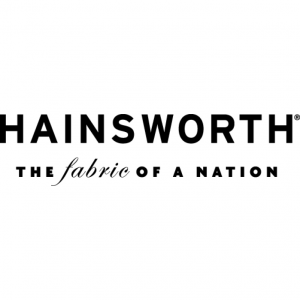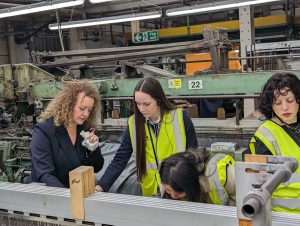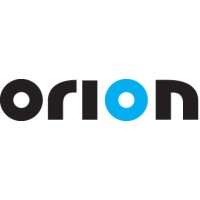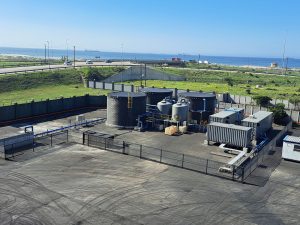 OAKLAND, Calif. — July 29, 2024 — Today, unspun, a producer of 3D weaving technology, announced $32 million in an oversubscribed Series B funding round led by DCVC, with participation from Lowercarbon Capital, E12, Decathlon and SOSV.
OAKLAND, Calif. — July 29, 2024 — Today, unspun, a producer of 3D weaving technology, announced $32 million in an oversubscribed Series B funding round led by DCVC, with participation from Lowercarbon Capital, E12, Decathlon and SOSV.
The funding will fuel the rapid scaling of unspun’s innovative 3D weaving technology, Vega™ — designed to help brands realize a low-inventory, nearshore and automated supply-chain for woven products, which represent 57 percent of the total apparel market, as the company expands its operations in Europe and North America.
Vega is a 3D weaving technology for apparel. It takes thousands of yarns and weaves them into garments in minutes, allowing for (almost) zero-waste, on-demand manufacturing. This technology unlocks scalable on-demand or low-inventory production.
Because 3D weaving drastically shortens supply chains and lead times, brands and manufacturers can plug these machines into existing supply chains for localized and automated production. This opportunity allows traditional cut-make-trim facilities to vertically integrate operations, offering a faster (4 times), cleaner (53-percent emissions reduction, 49-percent reduced energy demand and a 39-percent reduced blue water consumption), more efficient (less than 3-percent cut waste, compared to the industry average of 15 percent), and a more agile supply chain that is more responsive to market demands.
unspun has signed multi-year agreements with multiple top retailers like Walmart to deploy its Vega machines for localized production in both North America and Europe. This demonstrates growing demand from major funds, brands, and retailers seeking more sustainable and efficient manufacturing solutions amid growing regulatory pressure and consumer demand for supply chain transparency and sustainability. In Europe, where new rules proposing production limits and waste bans are under consideration, local-for-local manufacturing enabled by unspun’s technology provides a clear competitive edge for compliance. With Vega machines vastly expediting the design-to-shelf process, brands will be empowered to keep up with the ultra-fast cadences set by fast-fashion disruptors while maintaining quality, profitability, and low waste.
With this funding, unspun is taking the first step in rapidly scaling its operations through licensing its technology to established manufacturing partners in Europe.
With record levels of unsold goods circulating in the industry, this has never been more timely. unspun partners with brands and manufacturers who are committed to decarbonizing their fashion supply chains with onshored, low-impact, and automated production. Vega will also have circular supply chain applications, and unspun is developing products and manufacturing techniques that allow for garments to be unspun back into yarns, and re-woven into new products.
“Overproduction has long been a taboo in fashion. It is now recognized by top-tier climate-funds as a key issue to urgently solve for the industry,” said Walden Lam, CEO of unspun. “We are overwhelmed with the enthusiasm, and excited to be partnering with DCVC, Lowercarbon, SOSV climate, Decathlon and many commercial partners to urgently scale Vega to localize apparel manufacturing across North America and Europe.”
With Vega 3D weaving the product capabilities are endless, and these high-performing jacquard machines can create woven garments using almost any yarn. The current generation of the machines is focused on producing high quality outputs for bottoms (they can also create bags and hats) while future generations of the machines will allow the company to expand into performance categories, outerwear, shoes, tops, and dresses.
“unspun offers a tremendous economic and logistical unlock for the fashion industry by eliminating costly overproduction and radically shortening the supply chain. We think it’s good business to align profits and climate impact and are excited to help unspun revolutionize the way clothing is made,” says Milo Werner, general partner at DCVC, who will join unspun’s board of directors.
This announcement follows unspun’s recent reveal of a project with Walmart, the world’s leading omnichannel retailer. The project aims to localize parts of Walmart’s manufacturing and promote a higher level of supply chain traceability in North America. Before this, unspun partnered with the fashion label Eckhaus Latta. Together, they introduced the first-ever 3D woven collection at New York Fashion Week. These products are now accessible online through various retailers and in stores globally. unspun’s Vega technology continues to be a pioneering force in the fashion and design industry, recently playing a crucial part in the launch of designer Ana Kraš’ lifestyle brand, Teget.
unspun’s technological capabilities and vision for the future of fashion have landed the company on America’s Top Greentech companies 2024 by Time magazine, Vogue 100 innovator’s list, Newsweek’s Climate Change Innovators, TIME‘s Best Inventions, and Fast Company’s World-Changing Ideas.
Posted: July 30, 2024
Source: unspun















